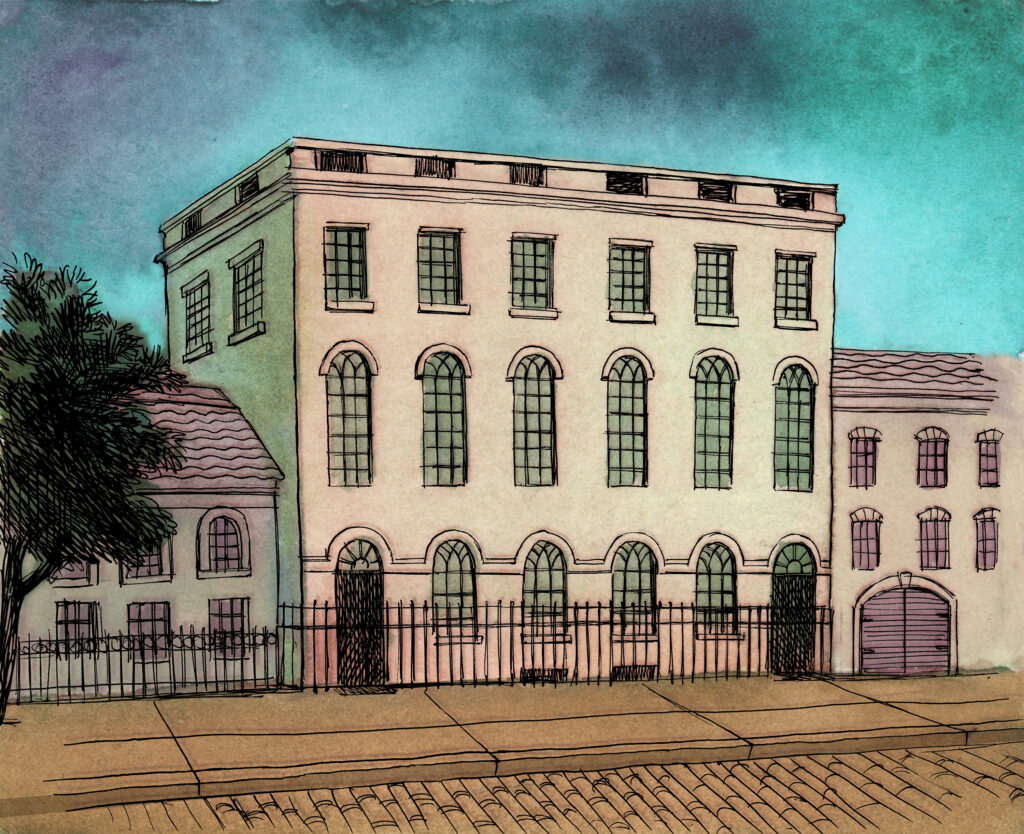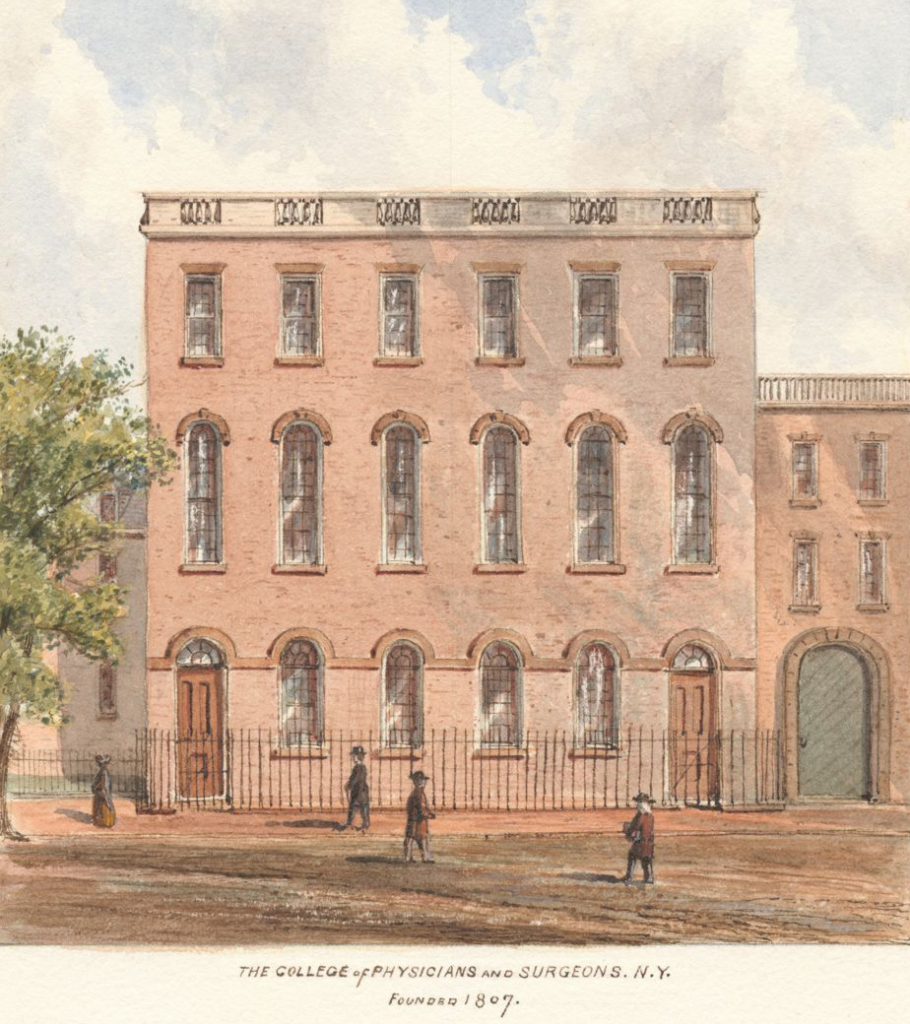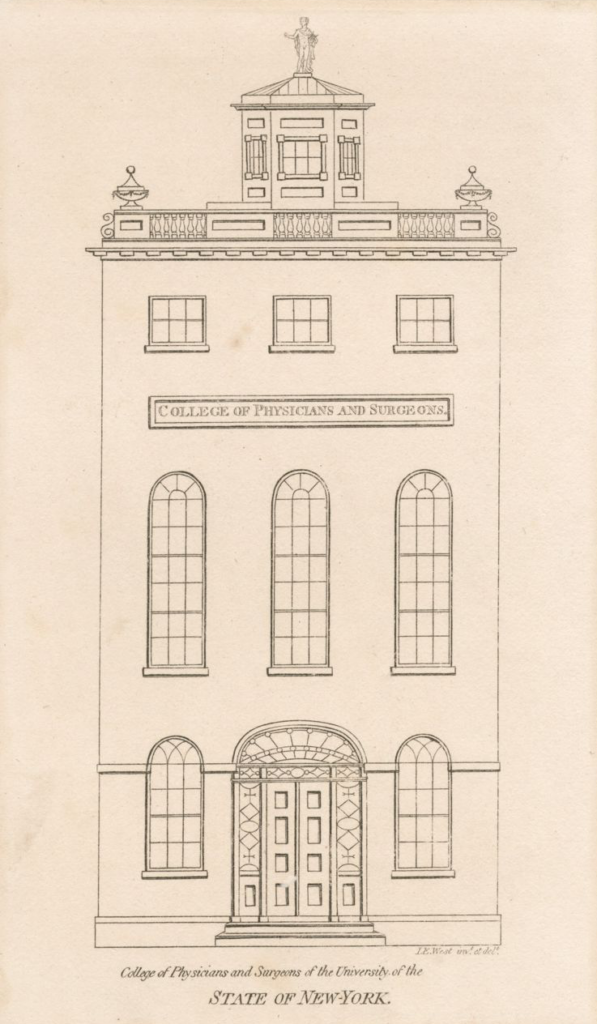Academy’s Past: Where It All Began
The Lyceum shared its first home with the College of Physicians and Surgeons, not far from the City Hall building that still stands today.
Published June 25, 2024
By Nick Fetty
The College of Physicians and Surgeons | 3 Barclay Street | January 1817 – April 1817
The story of The New York Academy of Sciences starts where many New York stories have – in downtown Manhattan.
It was here, on Barclay Street, near Broadway, that The Lyceum of Natural History in the City of New York (“The Lyceum” – which would become The New York Academy of Sciences in 1876) was founded. The Lyceum shared the building with the College of Physicians and Surgeons, part of the Medical Department of Columbia College, which moved into the space in 1813.
Originally built as a brick store house, the 25-foot by 38-foot, three-story building was later adapted to meet the needs of the medical school. This included a chemical lecture room, a lecture hall, and an anatomical theatre. Ornamental details included “a terminal balustrade and a cupola, surmounted by a statue of Apollo, to indicate the scientific and medical character of the institution.”
Establishing a ‘Cabinet of Natural History’
At the time, the Lyceum’s membership was largely composed of associates of the College of Physicians and Surgeons, including Dr. Samuel L. Mitchell, who served as the Lyceum’s first president. The first meeting was held at the Barclay Street facility on January 29, 1817, when members considered “the adoption of measures for instituting a ‘Cabinet of Natural History’ in New York City.”
The cabinet would eventually include numerous natural history displays and artifacts, many collected by Lyceum members, and would go on to rival the collections of the New-York Historical Society. The Lyceum’s collection ultimately became so extensive and popular with its members and visitors, that in 1820, “the Historical Society relinquished its collecting functions to the Lyceum, to which it also sold its valuable collection of natural history objects.”
The Lyceum hosted its preliminary meetings in this facility before officially adopting a constitution. The first formal meeting was held at Harmony Hall, a public house on the southeast corner of Duane and Wiliam Streets, where the original 21 members signed the constitution, and the first officers were elected.
By this time, the Lyceum had established its cultural utility to the city and was ready to move to its next home.
This is the first piece in an eleven-part series exploring the Academy’s past homes.



